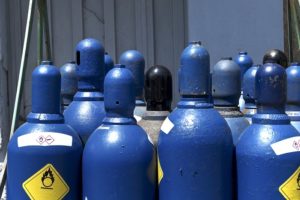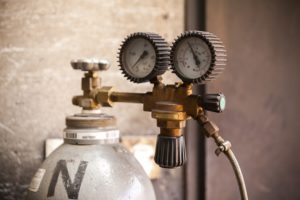Acetylene and oxygen gases are used to weld and cut metal. They are often combined to create a very intense flame at a very high temperature. Once the work is done, however, how they’re disconnected and stored is vital to maintaining safety in the workplace. It isn’t enough just to monitor for the presence of gas in storage areas; both have to be cared for properly or the risks of combustion are increased. If you’re looking for a portable gas detector for sale to monitor acetylene and oxygen tanks, by all means, get the detector, but also make sure your storage process safeguards you and your co-workers or employees.

The Basics
Oxygen is used in welding, cutting, soldering, and brazing. While oxygen itself isn’t flammable, it accelerates ignition, combustion, and burning whenever it is in the presence of a flame. For flammable gases such as acetylene, it’s more effective than pouring gasoline on a fire.
Acetylene is an extremely volatile gas that is used in welding, brazing, wood aging, carbon coating, thermal spraying, and texturing. It’s also used as a hardener and a cleaner for some substances. Acetylene is stored and transported in cylinders. The cylinders contain a mixture of gas dissolved in a solvent, usually acetone, and a porous mass for acetylene stability. The cylinders are designed to slow down decomposition, which, when left to itself, can create an extremely hazardous and volatile atmosphere.
Oxygen Cylinder Risks
Oxygen cylinders keep oxygen from permeating a room’s air and creating a highly volatile environment that is ideal for accelerating a fire. Portable gas detection monitors alert workers if oxygen is present at an elevated level. If the oxygen level in a room exceeds 21%, an oxygen-enriched environment is created, and a leak can raise the oxygen level to in excess of that percentage. When that happens, any fire will receive an instant boost that can lead to an explosion or uncontrolled fire.
There are several situations that will contribute to an oxygen-rich environment including:
- Faulty portable gas detection equipment that doesn’t alert employees that there’s an oxygen leak
- Frayed or damaged hoses, valves, and loose connections that allow oxygen to escape their storage container
- Open outlet valves
- Breach of the cylinder after an impact
The cylinders coming into contact with incompatible substances like oil, grease, some plastics, and metals, which can lead to ignition or combustion.
Acetylene Cylinder Risks

Acetylene is so volatile it has to be dissolved in a solvent and stored with a porous mass to keep it stable. This combination thwarts decomposition, which generates heat and can lead to ignition and explosion. Decomposition is caused by:
- Exposure to intense heat
- Reaction to incompatible substances such as copper or brass
- Separation of the gas from the acetone and the porous mass in the cylinders
- Exposure to sparks
- Rapid release of the gas and the failure to detect this breach by a portable gas leak detector
Storage
For safety purposes, oxygen and acetylene cylinders have to be stored a minimum of 10 feet from each other. That means they must be returned to storage at the end of a workday, even if they will be used together the next day. In the storage facility, both types of cylinders must be kept separate. A fixed or portable gas detector also is recommended. If space is an issue, employees should adhere to state and local laws for how to store them using screen walls.







